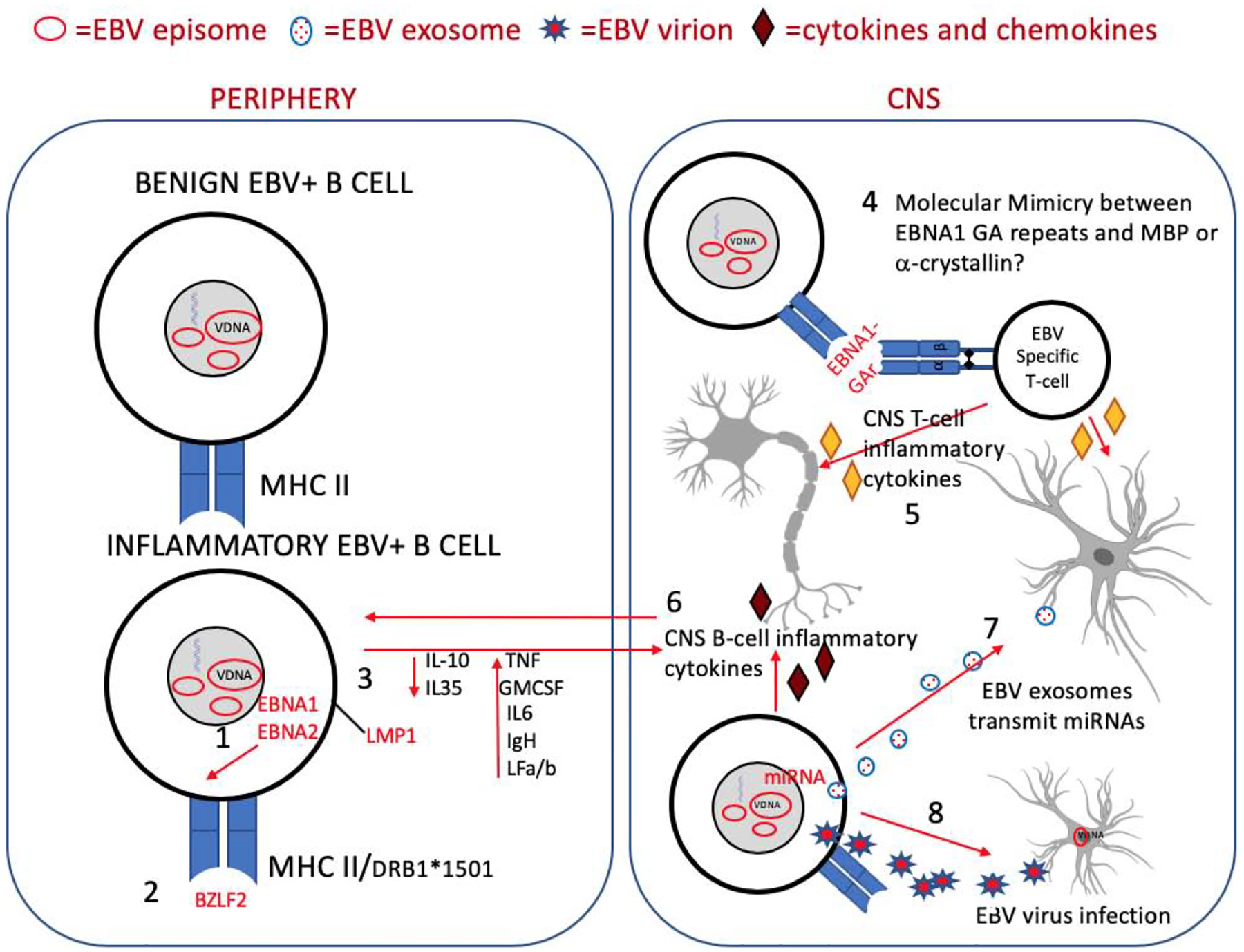Figure 4.

Possible mechanisms for EBV as an etiologic or disease-modifying agent in multiple sclerosis. Several possible hypotheses have been proposed for EBV as a mediator of CNS damage and disease in MS and it is likely that the interplay between host and viral determinants are involved. Viral determinants may include: 1. the EBV latency proteins EBNA1, the master regulator of EBV latency and an important pro-survival factor, and EBNA2, which is involved in B-cell transformation and exerts transcriptional control of HLA disease-risk alleles associated with MS and other autoimmune disorders; 2. the EBV lytic protein, BZLF2, which also interacts with MHC2 and may influence the immunopathogenesis of MS; 3. the latency protein LMP1 that increases expression of proinflammatory cytokines; 7. exosomes released from EBV-infected B cells in the brain containing viral miRNAs, viral transactivators, and inflammatory cytokines that may contribute to virus mediated damage in the CNS; and 8. EBERs that may contribute directly to the inflammatory milieu of the MS lesion by inducing IFN-a and other components of the innate immune system. Host determinants involved in EBV-associated CNS damage may include: 2. Susceptible HLA alleles; 3. Poor CTL control of EBV infection that results in the persistence of inflammatory B cells with increased trafficking to the CNS; 4. molecular mimicry and 5. bystander damage that results from T cell targeting of EBV infection in the CNS and 6. damage from inflammatory B cells present in the brain
